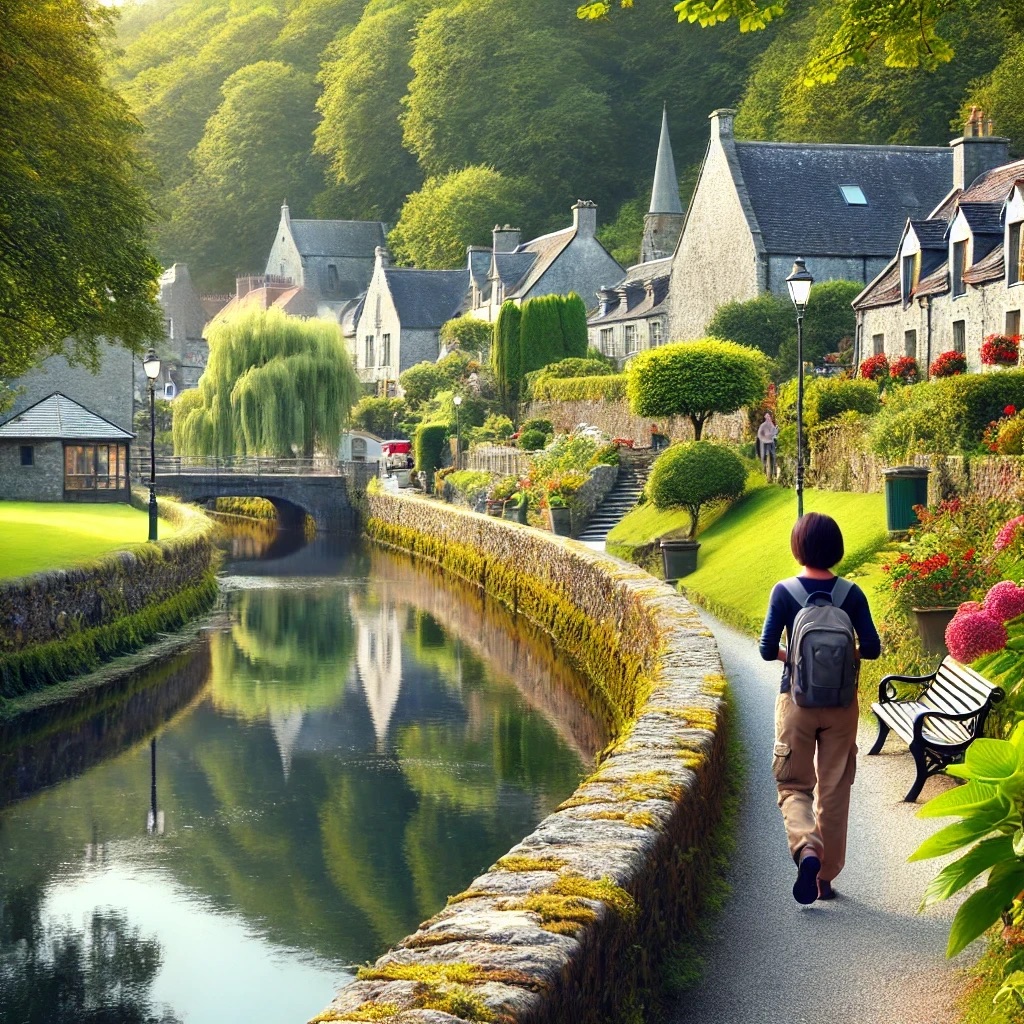ChatGPT:
Beaulieu-sur-Dordogne is a picturesque medieval town located in the Corrèze department of the Nouvelle-Aquitaine region in southwestern France. Nestled on the banks of the Dordogne River, the town is known for its charming streets, historical architecture, and stunning natural surroundings.
The town’s historic center is characterized by its narrow, winding streets, half-timbered houses, and well-preserved medieval buildings. One of the most notable landmarks is the Abbey Church of Saint-Pierre, a Romanesque church with an intricately carved tympanum depicting the Last Judgment. The church dates back to the 12th century and is a fine example of the region’s religious architecture.
Beaulieu-sur-Dordogne is also famous for its beautiful riverside setting. The Dordogne River provides opportunities for various water activities, including canoeing and fishing. The town’s location in the Dordogne Valley makes it an excellent base for exploring the surrounding countryside, with its rolling hills, lush forests, and charming villages.
The town hosts several events throughout the year, including the Strawberry Festival, which celebrates the local production of strawberries and features markets, music, and other festivities. Beaulieu-sur-Dordogne is also known for its local cuisine, which includes specialties such as foie gras, duck confit, and walnut-based dishes.
Overall, Beaulieu-sur-Dordogne offers a blend of historical charm, natural beauty, and rich cultural traditions, making it a delightful destination for visitors seeking an authentic French experience.
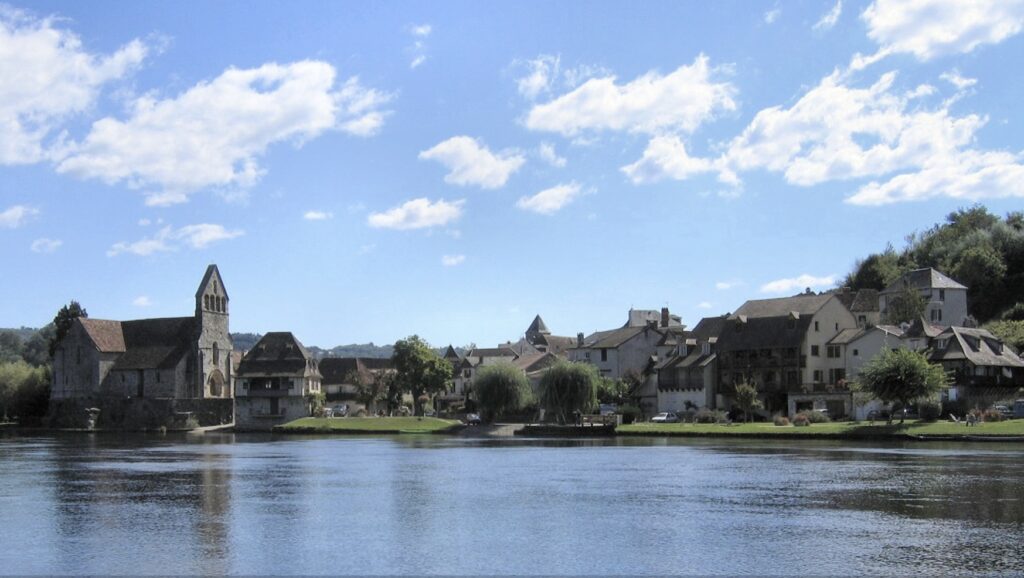
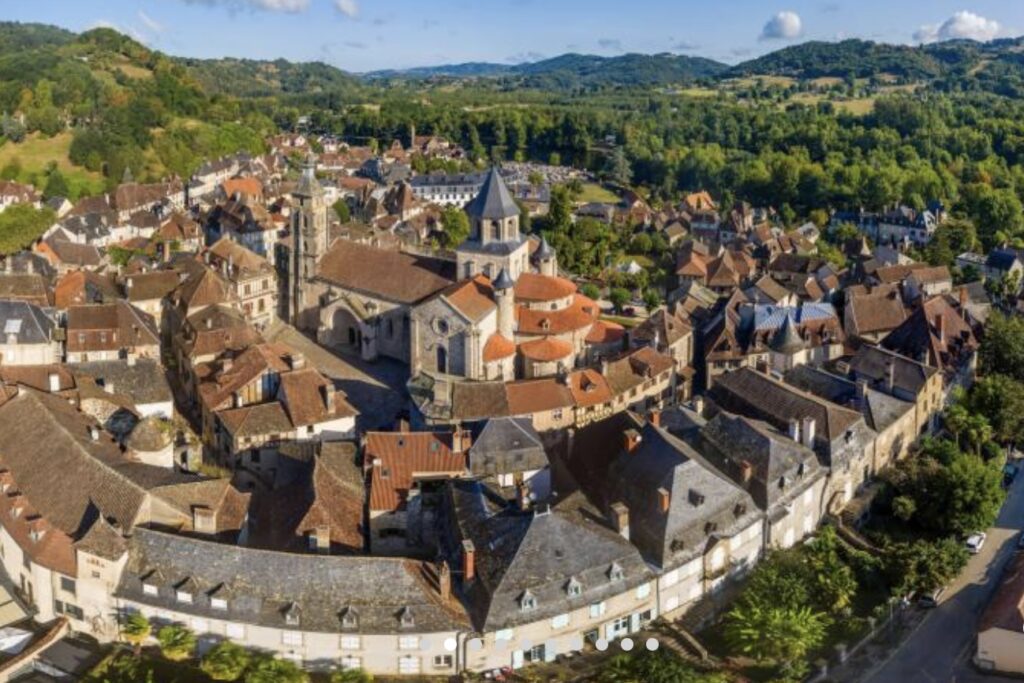
Beaulieu-sur-Dordogne, often simply referred to as Beaulieu, has a rich history that traces back to the early medieval period, with its origins linked to religious and monastic foundations. The town’s development over the centuries has been deeply intertwined with its strategic location along the Dordogne River, its religious significance, and its agricultural prosperity.
Origins and Early History
The town of Beaulieu-sur-Dordogne was originally founded around a Benedictine abbey, the Abbey of Saint-Pierre, which was established in the 9th century. The abbey was founded by Rodolphe de Turenne, the Archbishop of Bourges, around 855 AD. He named the settlement Bellus Locus, Latin for “Beautiful Place,” which evolved into Beaulieu. The choice of location was strategic due to the fertility of the surrounding land and its proximity to the Dordogne River, which provided a vital transportation and trade route.
The abbey quickly became a center of religious life and attracted pilgrims, especially after the abbey acquired important relics, including those of Saint Prime and Saint Félicien. The abbey’s influence helped the town grow as a religious and economic center during the Middle Ages.
Medieval Prosperity
Throughout the Middle Ages, Beaulieu-sur-Dordogne developed into a prosperous town, thanks to its monastic community and its location on the Dordogne River. The river not only facilitated trade but also offered protection and resources for the town. Beaulieu’s prosperity during this period is reflected in the construction of the Abbey Church of Saint-Pierre, which became one of the finest examples of Romanesque architecture in the region. The church’s elaborate carvings and sculptures, particularly the tympanum, are a testament to the town’s wealth and religious importance during this era.
In the 12th century, the town became a fortified settlement, with walls and towers built to protect its inhabitants from the frequent conflicts that characterized the period. The fortifications also helped to safeguard the abbey and its treasures.
Renaissance and Later Developments
During the Renaissance, Beaulieu-sur-Dordogne continued to thrive, but like many towns in the region, it was affected by the Wars of Religion in the 16th century. The Protestant Reformation led to conflicts between Catholics and Huguenots, and the town experienced periods of turmoil during these religious wars.
In the following centuries, Beaulieu-sur-Dordogne became more of a quiet agricultural town, with its economy relying on farming, particularly the cultivation of walnuts and strawberries, which the region is still famous for today. The town’s river port also facilitated trade in agricultural products, contributing to its economic stability.
19th and 20th Centuries: Modern Development
In the 19th century, the construction of railways and better roads reduced the town’s reliance on river trade, leading to a decline in its traditional economic activities. However, Beaulieu-sur-Dordogne began to attract visitors drawn to its historical charm and picturesque setting, laying the groundwork for its development as a tourist destination.
The 20th century saw a renewed interest in preserving the town’s medieval heritage. Restoration efforts were undertaken to protect and restore the town’s historic buildings, particularly the Abbey Church of Saint-Pierre. The town also began to capitalize on its natural beauty, promoting itself as a destination for river tourism and outdoor activities like canoeing, hiking, and fishing.
Contemporary Beaulieu-sur-Dordogne
Today, Beaulieu-sur-Dordogne is a vibrant town that balances its rich historical heritage with modern tourism. It has become a popular destination for visitors seeking to explore the Dordogne Valley’s natural beauty and historical sites. The town’s annual Strawberry Festival and other cultural events highlight its agricultural traditions, while the preserved medieval architecture offers a glimpse into its storied past.
Beaulieu-sur-Dordogne and its surrounding area are rich in historical monuments and tourist attractions that reflect the town’s medieval heritage, religious significance, and natural beauty. Here’s a list of notable sites to visit:
Historical Monuments
- Abbey Church of Saint-Pierre:
- Description: This Romanesque church is the most prominent historical monument in Beaulieu-sur-Dordogne. It features an intricately carved tympanum depicting the Last Judgment, a stunning example of medieval art. The church’s interior includes a spacious nave, a crypt, and remnants of medieval frescoes.
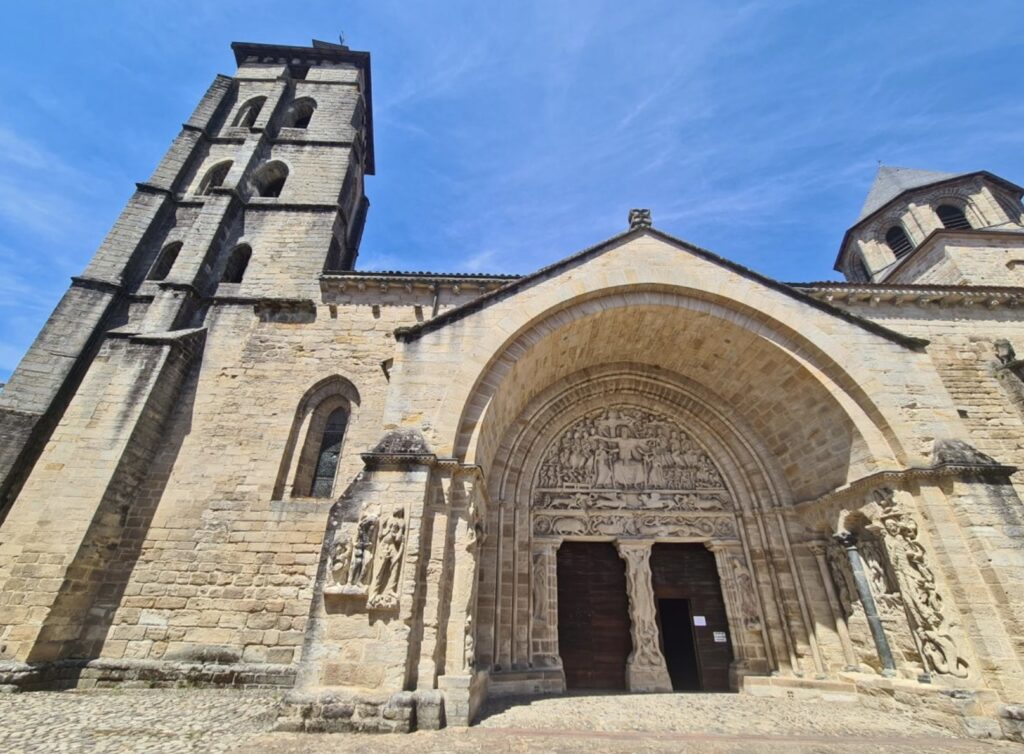

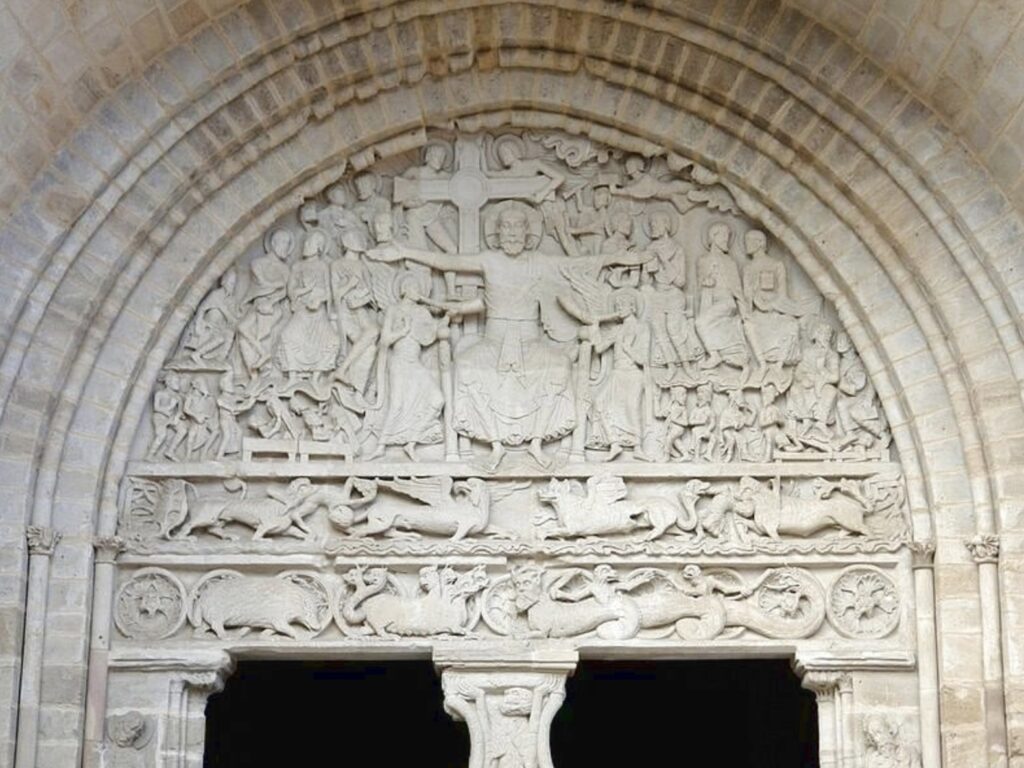
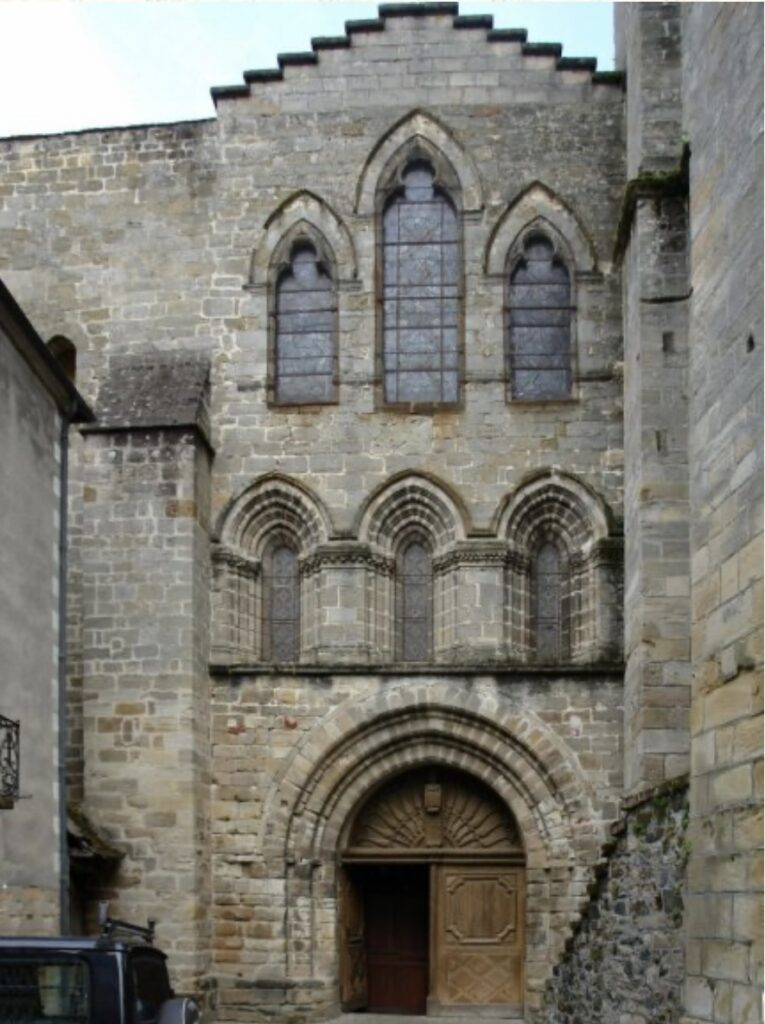
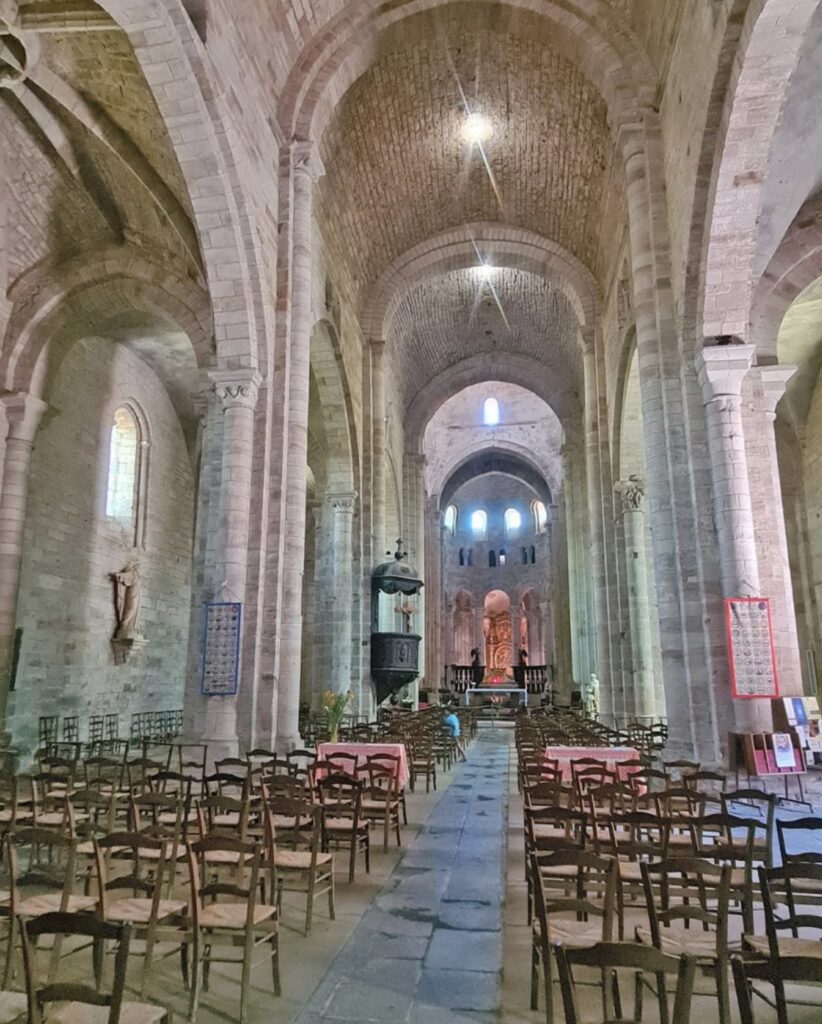
- Chapel of the Penitents (Chapelle des Pénitents):
- Description: Located on a hill overlooking the town, this small chapel offers panoramic views of the Dordogne River and the surrounding countryside. It was built in the 17th century by the Brotherhood of Penitents and is a site of local religious significance.
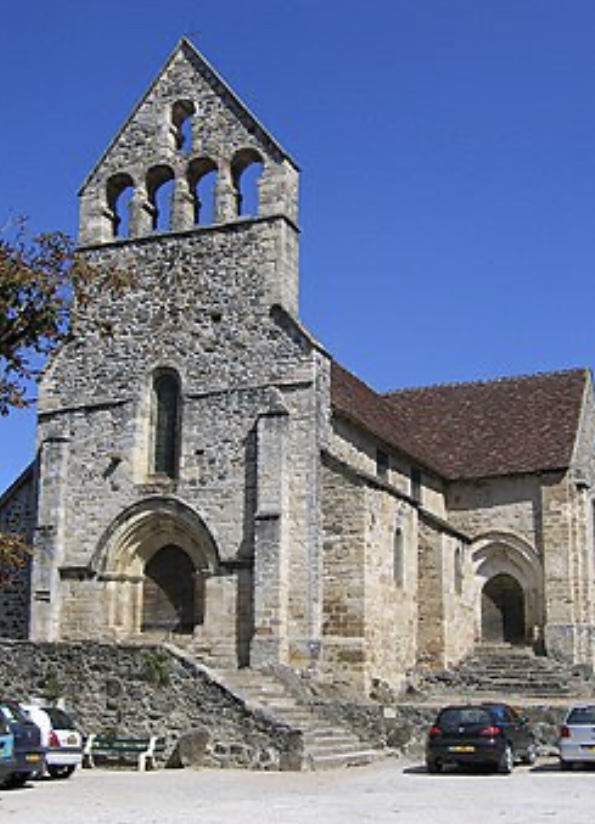
- Château d’Estresse:
- Description: A privately-owned castle located just outside Beaulieu-sur-Dordogne, Château d’Estresse dates back to the 15th century. While the castle itself is not open to the public, its impressive architecture and surrounding gardens can be viewed from the exterior.
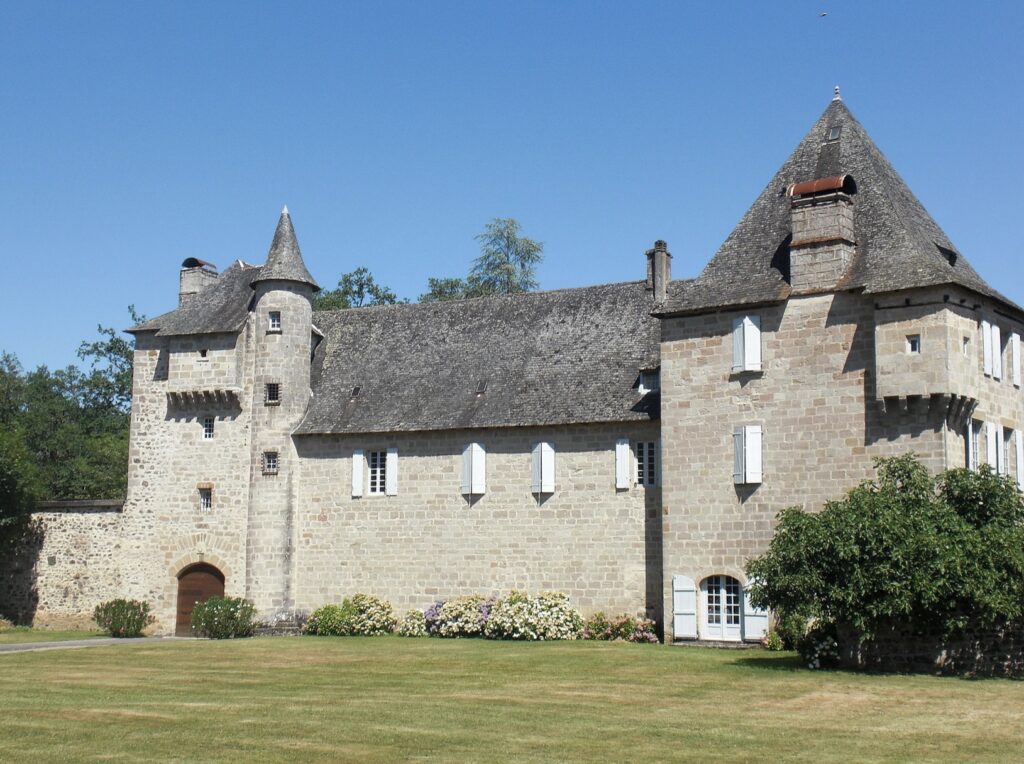
- The Old Bridge (Pont Vieux):
- Description: The medieval Pont Vieux is a stone bridge that crosses the Dordogne River, connecting Beaulieu-sur-Dordogne with the opposite bank. It is a picturesque example of medieval engineering and offers lovely views of the river and town.
- Maison Renaissance:
- Description: This Renaissance-style house in the town center is one of the most well-preserved buildings from the 16th century. Its ornate façade and historical significance make it a key point of interest for visitors exploring the town’s architecture.
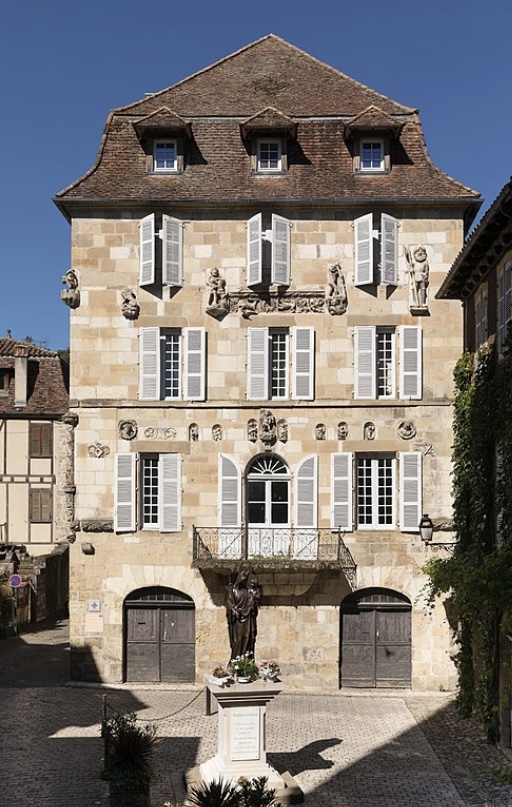
Tourist Attractions
- Les Jardins de l’Imaginaire (Gardens of the Imagination):
- Location: Nearby in Terrasson-Lavilledieu
- Description: These contemporary gardens are a blend of art, nature, and history. The gardens are designed to evoke different themes and emotions, offering a unique experience for visitors who enjoy both nature and design.
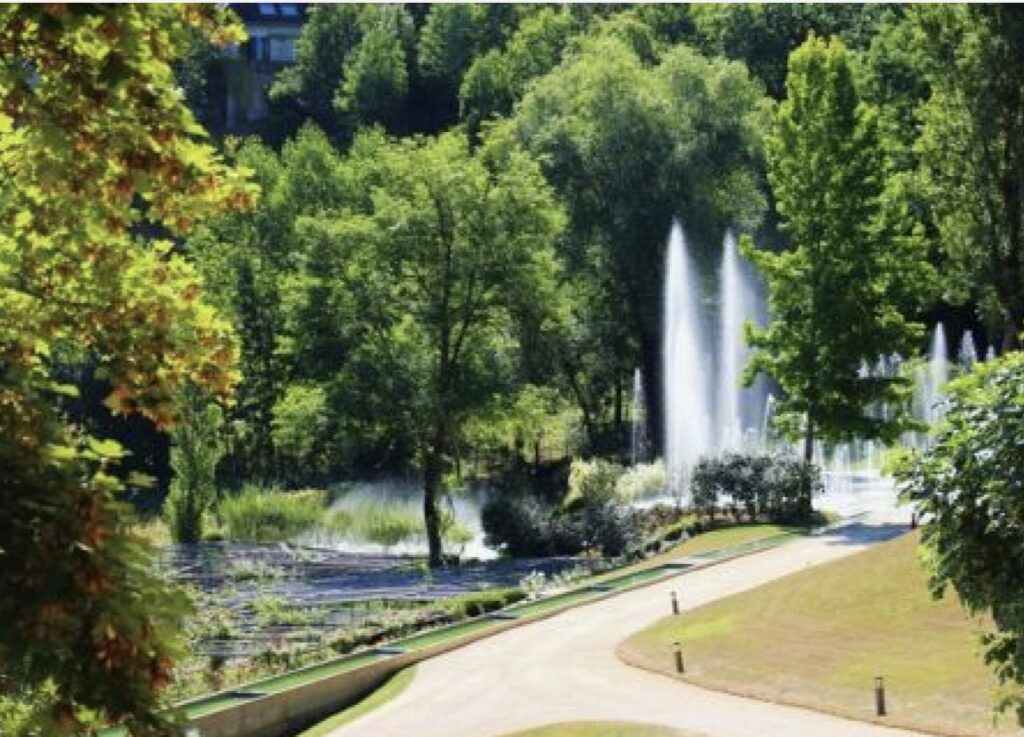
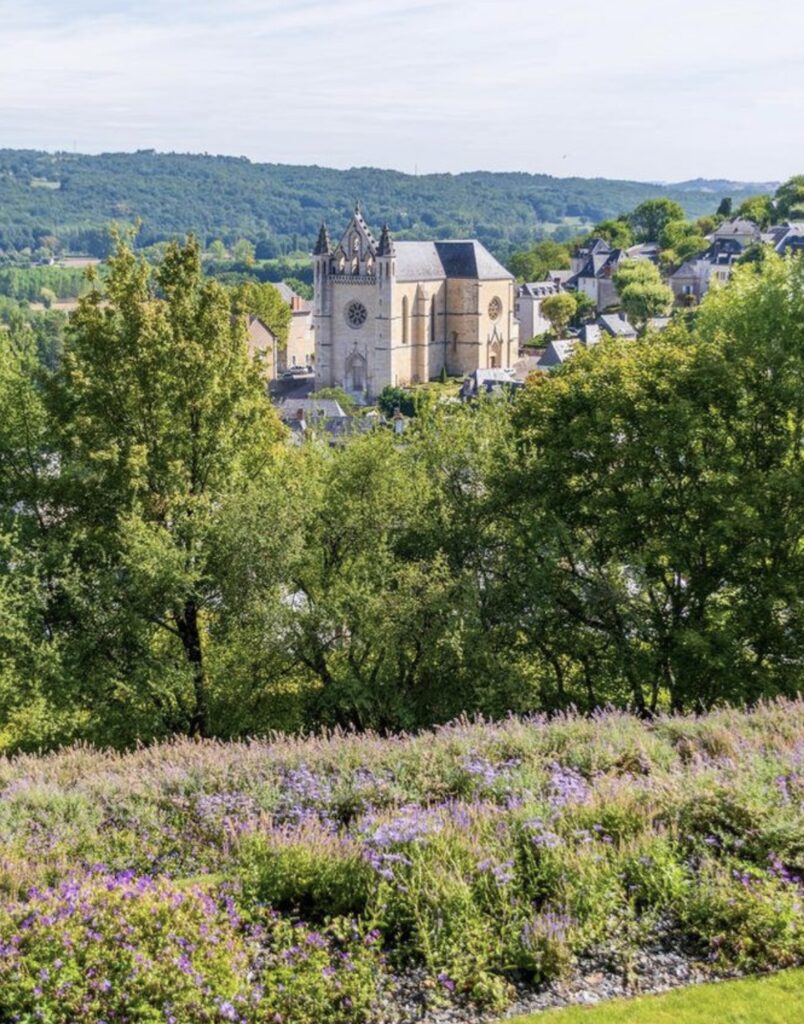
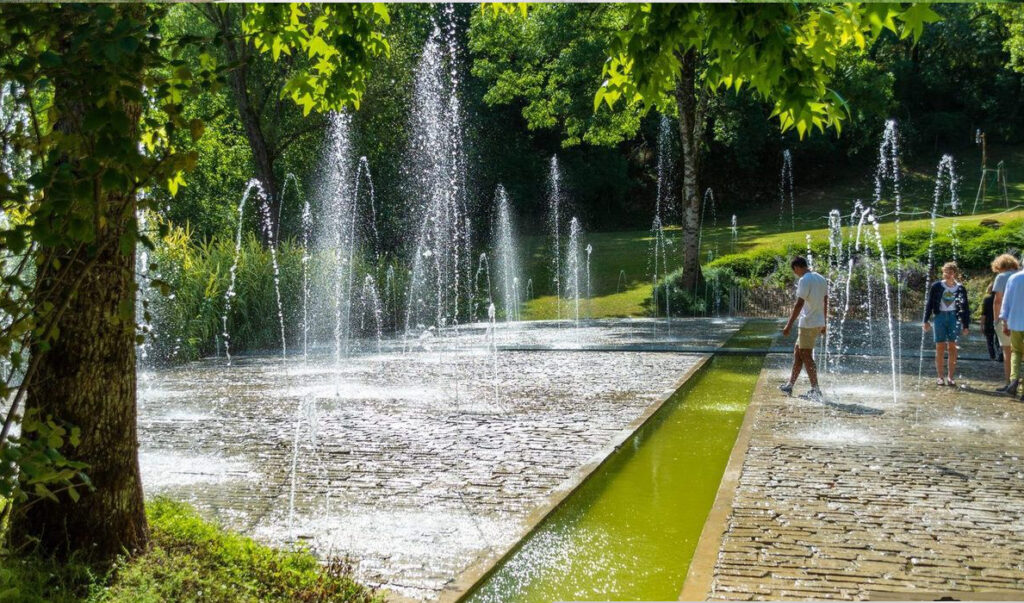
- The Dordogne River:
- Description: The river itself is a major attraction, offering opportunities for canoeing, kayaking, and boat trips. Exploring the Dordogne by water provides a different perspective on the natural beauty of the area and its historical villages.
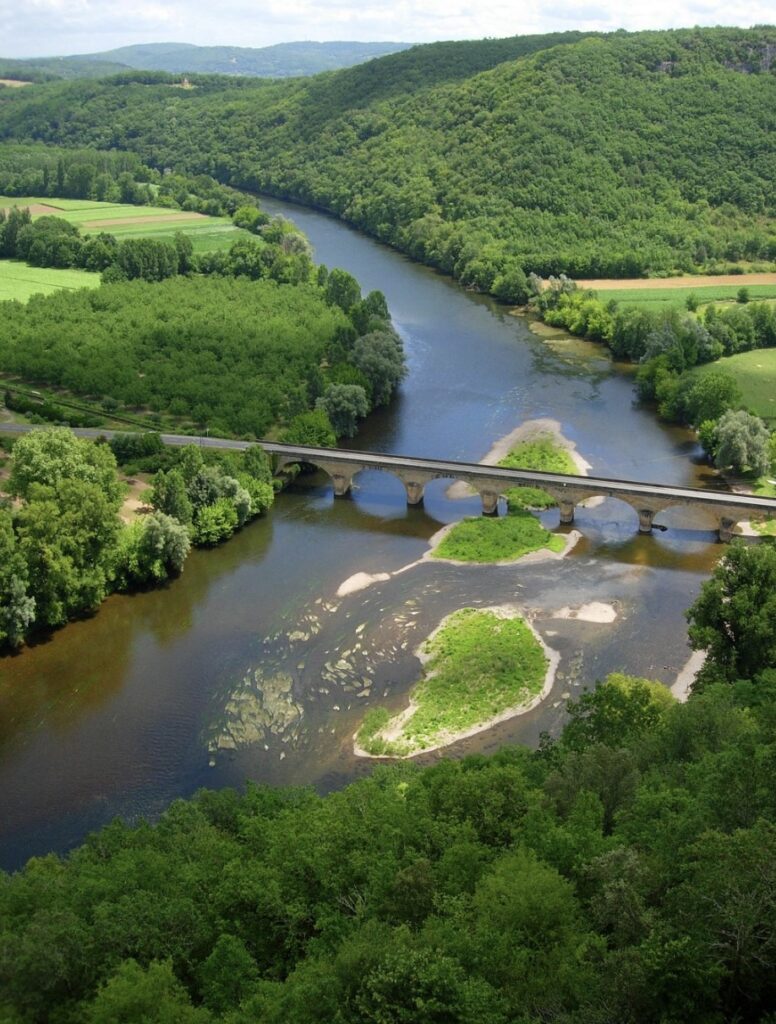
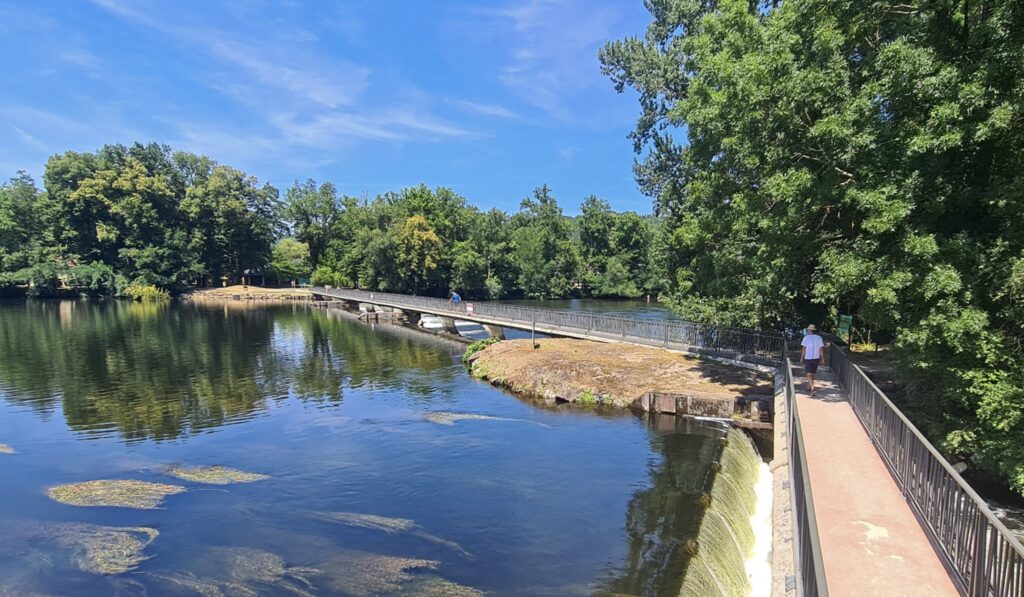
- La Ferme de Veyrignac:
- Location: Nearby in Veyrignac
- Description: This traditional farm offers visitors a chance to learn about local agriculture, particularly walnut and foie gras production. The farm also has a shop where you can buy local products.
- Fête de la Fraise (Strawberry Festival):
- Description: Held annually in Beaulieu-sur-Dordogne, this festival celebrates the local production of strawberries with markets, tastings, music, and various festivities. It’s a vibrant cultural event that draws visitors from the region.
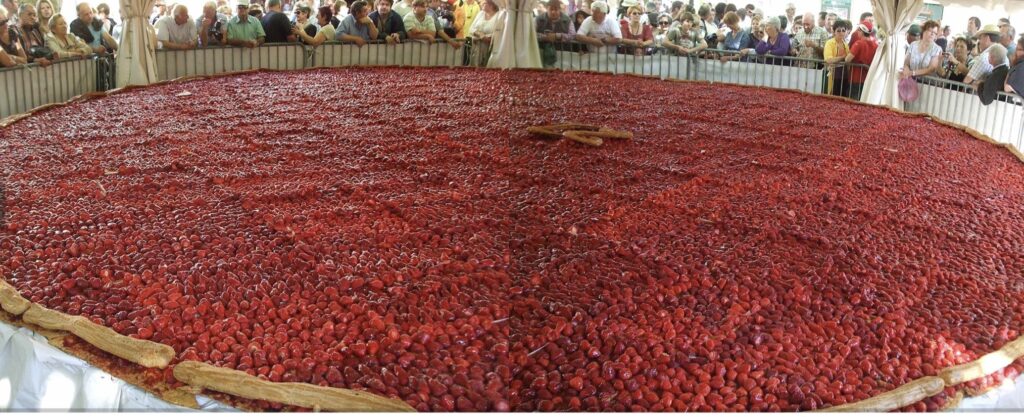
- Les Tours de Merle (Merle Towers):
- Location: Approximately 30 km from Beaulieu-sur-Dordogne
- Description: The Merle Towers are the ruins of a medieval fortress located on a rocky spur overlooking the Maronne River. The site offers a glimpse into medieval life and provides spectacular views of the surrounding landscape.
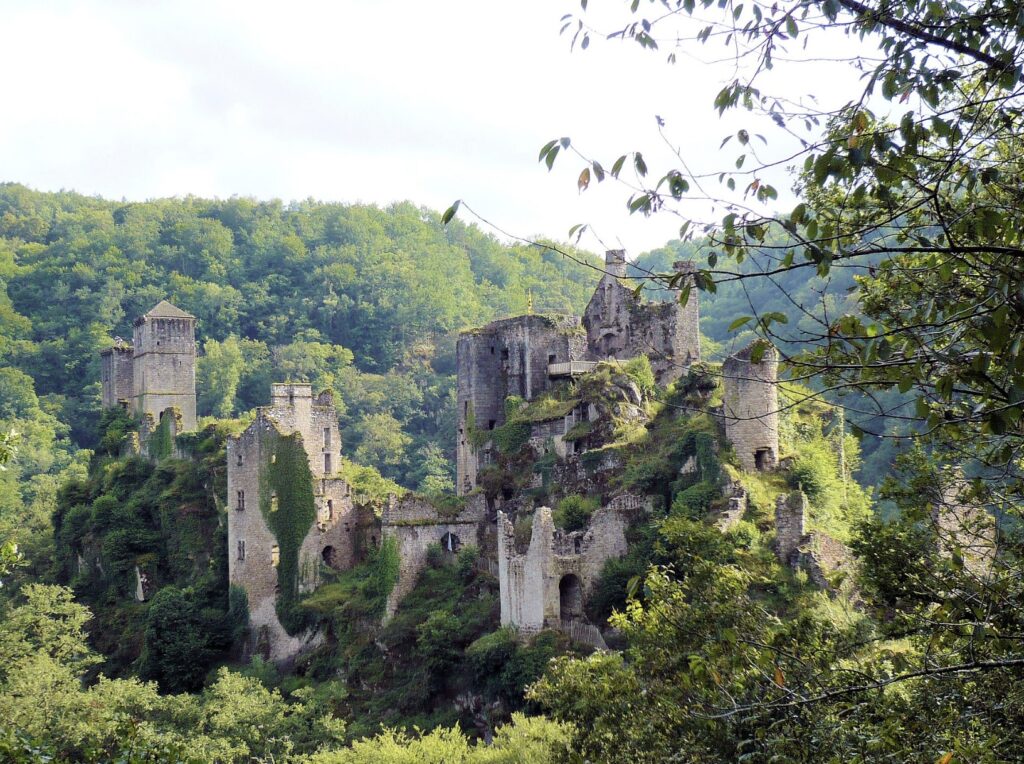
- Gouffre de Padirac:
- Location: Approximately 20 km from Beaulieu-sur-Dordogne
- Description: This famous cave system is one of the most visited natural attractions in France. Visitors can descend into the cave and take a boat ride along an underground river, marveling at the impressive stalactites and stalagmites.
- Les Plus Beaux Villages de France:
- Description: Beaulieu-sur-Dordogne itself is recognized as one of “Les Plus Beaux Villages de France,” a label given to the most beautiful villages in the country. Strolling through the town’s narrow streets, exploring its old houses, and enjoying the riverside views are essential experiences.
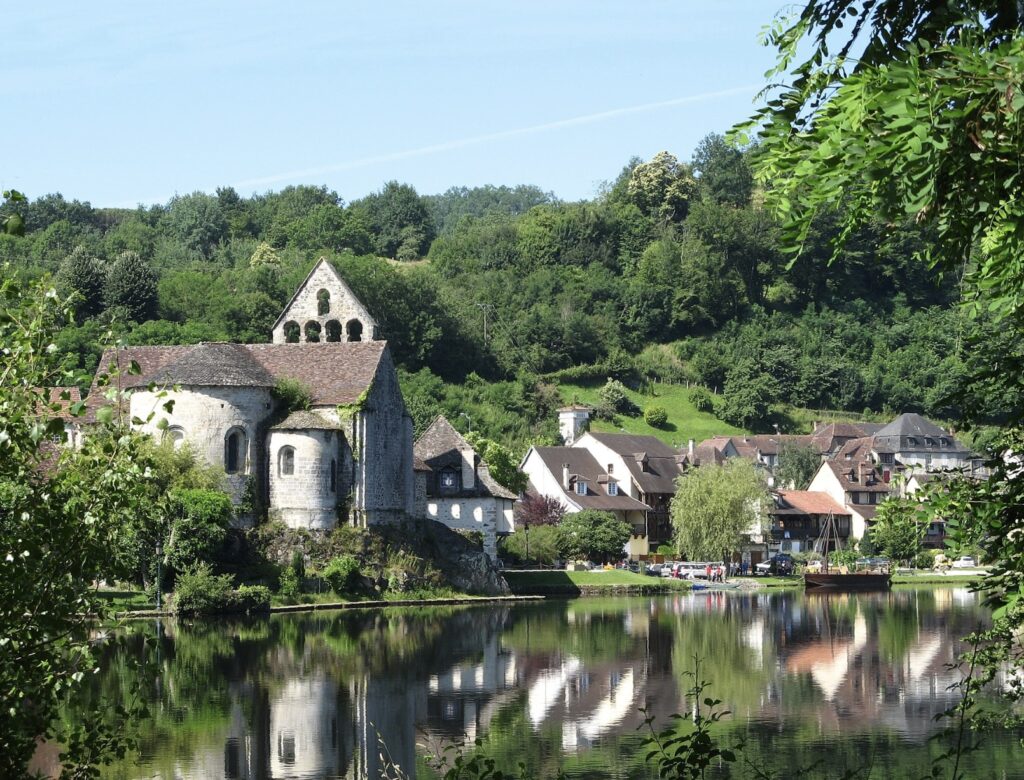
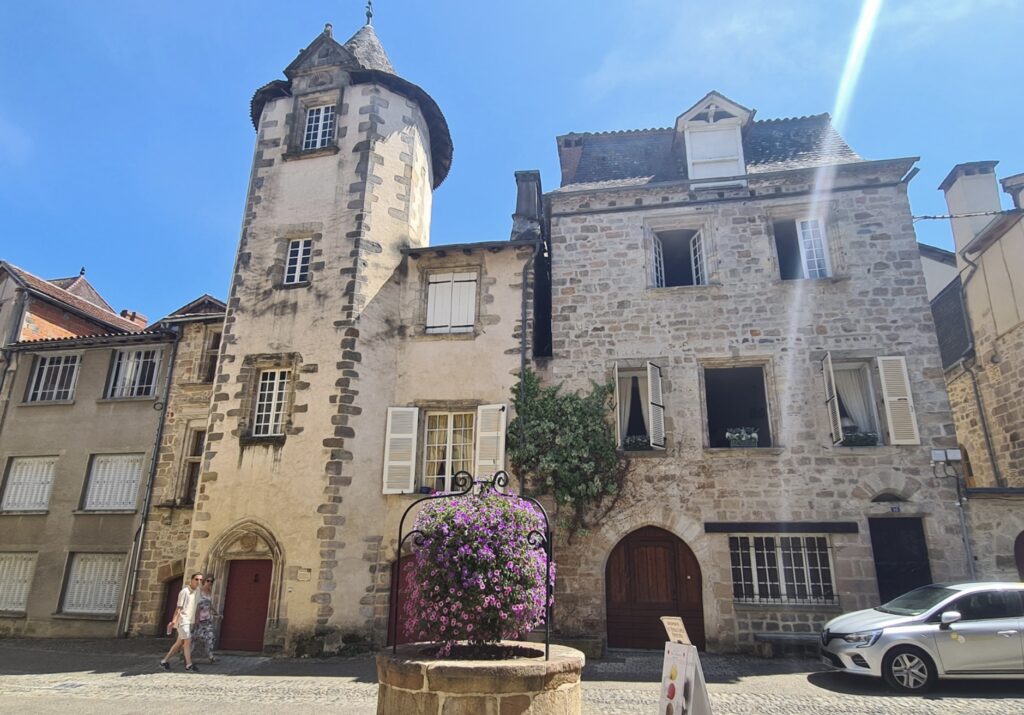
These monuments and attractions highlight the rich history, cultural heritage, and natural beauty of Beaulieu-sur-Dordogne and its surrounding area, making it a must-visit destination for travelers interested in both history and the outdoors.
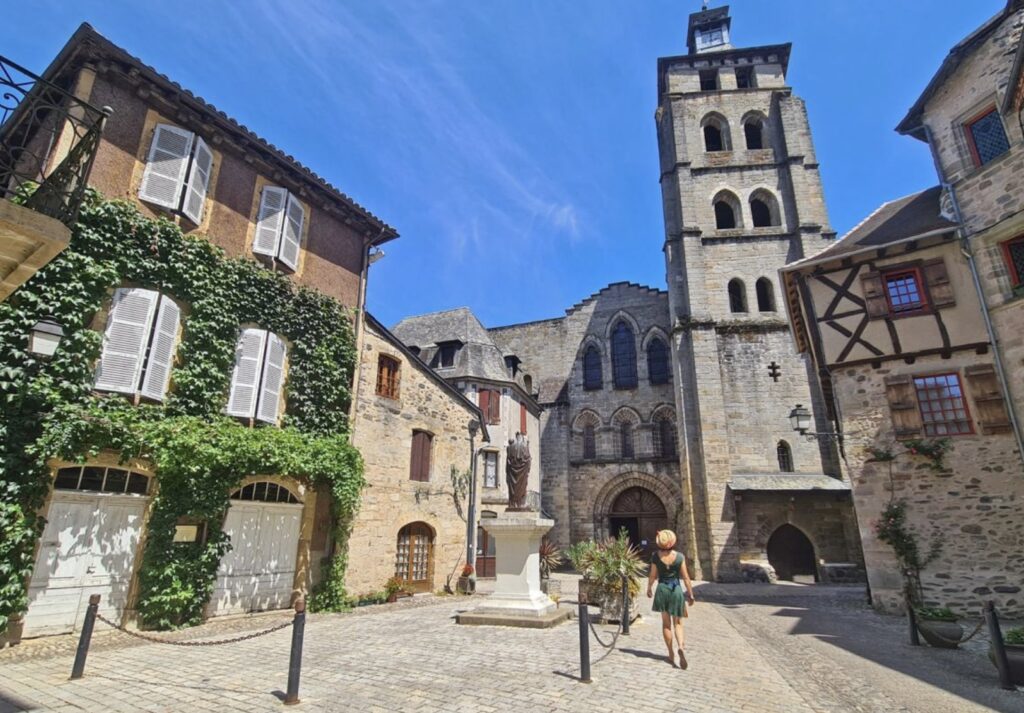
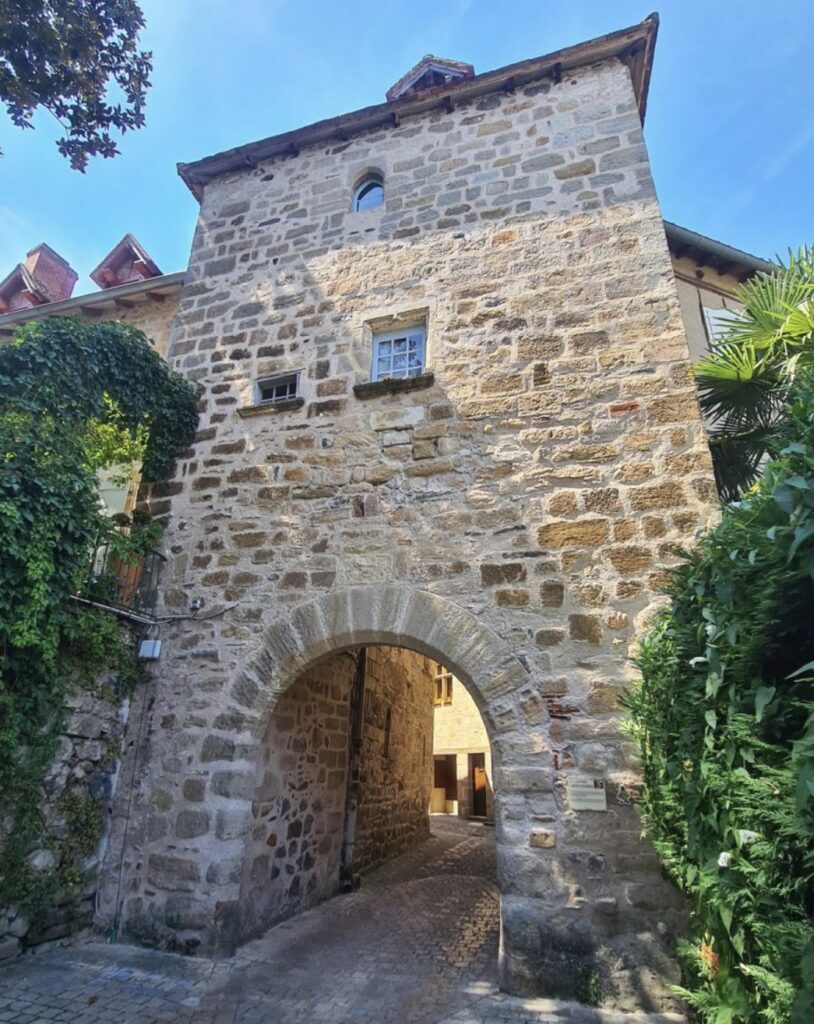
Beaulieu-sur-Dordogne and its surrounding area offer a variety of hiking trails that cater to different levels of difficulty, from easy walks along the river to more challenging routes that explore the hilly terrain of the Dordogne Valley. Here’s a selection of trails categorized by difficulty:
Easy Trails
- Sentier des Boucles de la Dordogne (Dordogne Loops Trail):
- Distance: Approx. 3-5 km (varies by loop)
- Description: This easy trail follows the gentle bends of the Dordogne River, offering beautiful riverside views, picturesque landscapes, and opportunities to explore small villages along the way. It’s perfect for a leisurely walk with minimal elevation.
- Circuit des Vergers (Orchard Circuit):
- Distance: Approx. 5 km
- Description: This trail takes you through the orchards and agricultural land around Beaulieu-sur-Dordogne. It’s an easy, flat walk that showcases the local rural scenery, including walnut groves and strawberry fields.
Moderate Trails
- Circuit de la Chapelle des Pénitents (Chapelle des Pénitents Circuit):
- Distance: Approx. 8 km
- Description: A moderately challenging hike that starts in Beaulieu-sur-Dordogne and takes you up to the Chapelle des Pénitents, offering panoramic views of the Dordogne Valley. The trail includes some elevation gain but is manageable for most hikers.
- Les Cascades de Murel (Murel Waterfalls Trail):
- Distance: Approx. 9 km
- Description: This trail leads you through the beautiful countryside to the Murel waterfalls. The route includes some uphill sections and traverses through forests and along streams. The highlight is the series of waterfalls where you can take a break and enjoy the natural beauty.
Challenging Trails
- Les Falaises de Gluges (Gluges Cliffs Trail):
- Distance: Approx. 12 km
- Description: A more demanding hike that takes you along the cliffs near the village of Gluges. The trail involves significant elevation gain and offers stunning views of the Dordogne River below. The terrain is varied, with rocky sections and steep ascents, making it suitable for experienced hikers.
- Sentier de la Vallée des Merveilles (Valley of Wonders Trail):
- Distance: Approx. 15 km
- Description: A challenging hike that takes you deep into the Dordogne Valley. The trail features steep climbs and descents, rugged terrain, and breathtaking views of the valley and surrounding hills. This hike is ideal for those looking for a more strenuous adventure in a remote and beautiful setting.
- GR46 (Grande Randonnée 46):
- Distance: Variable (can be a long-distance hike)
- Description: The GR46 is a long-distance hiking trail that passes through Beaulieu-sur-Dordogne. Sections of the trail can be taken as challenging day hikes, especially those that climb into the hills around the Dordogne River. The trail is well-marked and offers the opportunity to experience some of the region’s most dramatic landscapes.
These trails provide a range of experiences, from gentle walks suitable for families to more challenging hikes for seasoned adventurers. Each trail offers a unique perspective on the beautiful landscapes around Beaulieu-sur-Dordogne.
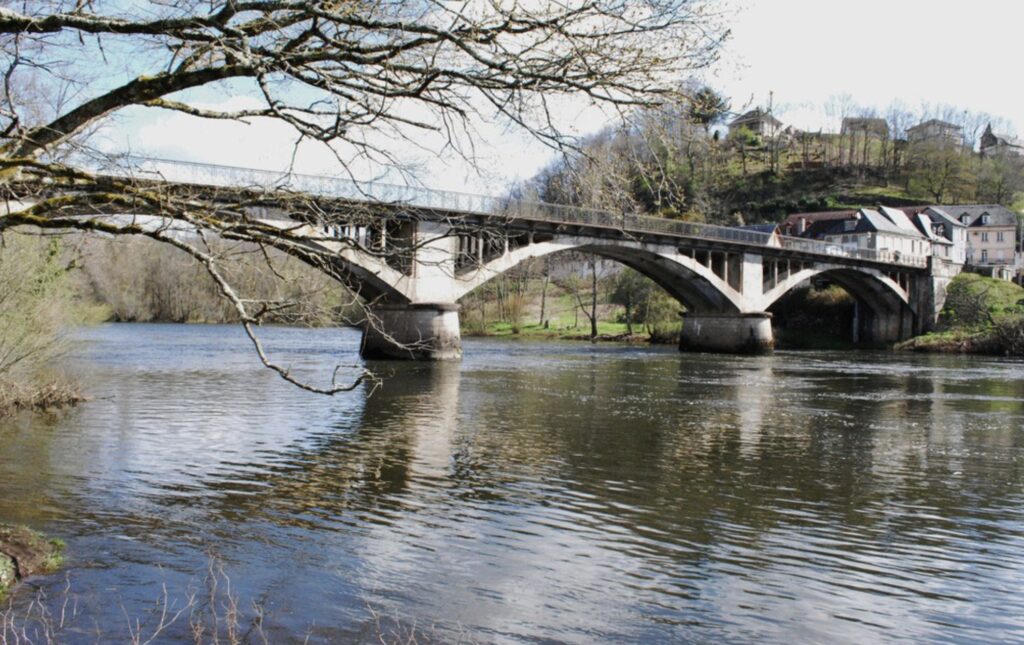
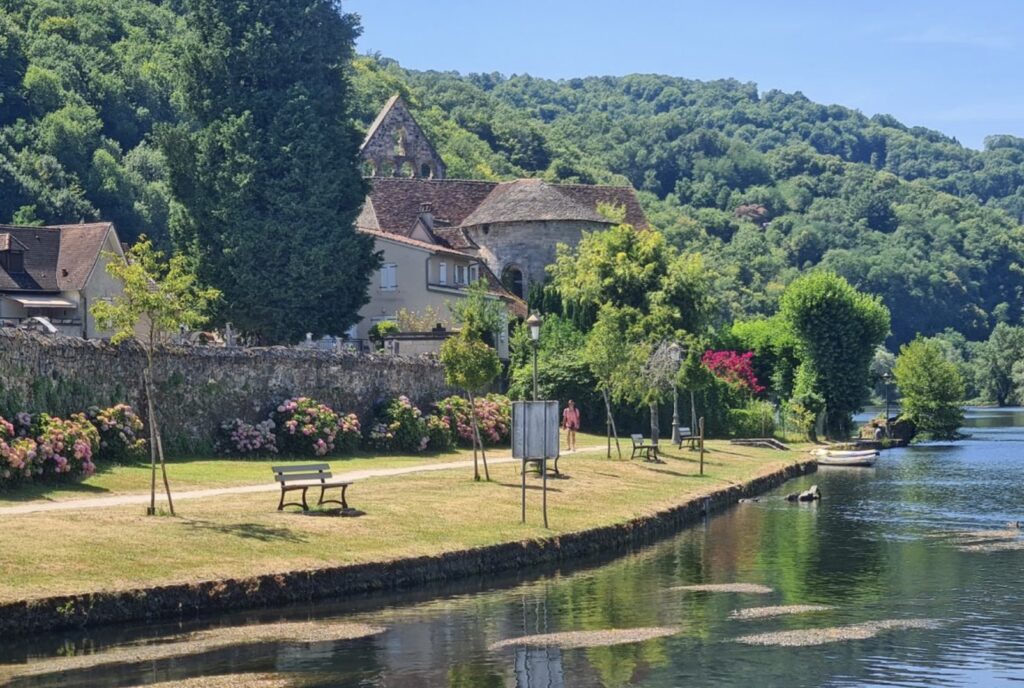
Here’s a three-day itinerary based on staying at Le Grand Hôtel Le Turenne in the center of Beaulieu-sur-Dordogne. This itinerary balances exploration of the town, local cuisine, and nearby hiking adventures.
Day 1: Arrival and Exploring Beaulieu-sur-Dordogne
Morning:
- Arrival and Check-in at Le Grand Hôtel Le Turenne:
- Settle into your room at this charming hotel located in the heart of Beaulieu-sur-Dordogne. The hotel’s central location will make it easy to explore the town on foot.
Late Morning:
- Explore the Abbey Church of Saint-Pierre:
- Begin your visit by exploring the Abbey Church of Saint-Pierre. Admire the Romanesque architecture and the famous Last Judgment tympanum.
Lunch:
- Lunch at Le Grand Hôtel Le Turenne Restaurant:
- Enjoy a delicious lunch at the hotel’s restaurant, where you can savor gourmet dishes made from local ingredients. Dine on the terrace if weather permits, with views of the picturesque town square.
Afternoon:
- Stroll through the Medieval Town:
- Spend the afternoon leisurely exploring Beaulieu-sur-Dordogne. Visit the Maison Renaissance, the Pont Vieux, and other historic landmarks. Take in the charm of the medieval streets and the views of the Dordogne River.
Evening:
- Dinner at Le Beaulieu:
- For dinner, walk to Le Beaulieu, a nearby restaurant offering a modern take on traditional regional dishes. Enjoy a relaxing meal with local wines.
Day 2: Hiking and River Adventures
Morning:
- Hiking the Les Cascades de Murel Trail (Moderate):
- Distance: Approx. 9 km
- After breakfast, drive to the starting point of the Les Cascades de Murel trail. This moderate hike will take you through lush forests and alongside streams, leading to a series of beautiful waterfalls.
Lunch:
- Picnic by the Dordogne River:
- After your hike, return to Beaulieu-sur-Dordogne and pick up some local delicacies for a picnic by the Dordogne River. Enjoy local cheeses, charcuterie, fresh bread, and strawberries while relaxing by the water.
Afternoon:
- Canoeing on the Dordogne River:
- Spend the afternoon on a canoeing adventure on the Dordogne River. Rent a canoe and paddle along the calm waters, taking in the scenic landscapes and perhaps even spotting some wildlife.
Evening:
- Dinner at La Terrasse de Beaulieu:
- For dinner, head to La Terrasse de Beaulieu. This riverside restaurant offers fine dining with a focus on fresh, local ingredients. Enjoy the tranquil setting as you dine with a view of the Dordogne River.
Day 3: Cultural Exploration and Scenic Hiking
Morning:
- Visit Les Tours de Merle (Merle Towers):
- Drive to Les Tours de Merle, about 30 km from Beaulieu-sur-Dordogne. Explore the ruins of this medieval fortress, perched on a rocky outcrop with stunning views of the surrounding valley.
Lunch:
- Lunch at a Traditional Auberge:
- On your way back, stop for lunch at a traditional auberge in a nearby village. Enjoy hearty regional dishes like lamb or truffle specialties, offering a taste of the local cuisine.
Afternoon:
- Hiking the Circuit de la Chapelle des Pénitents (Moderate):
- Distance: Approx. 8 km
- In the afternoon, take the Circuit de la Chapelle des Pénitents trail, starting from Beaulieu-sur-Dordogne. This hike will take you up to the Chapelle des Pénitents, where you can enjoy panoramic views over the Dordogne Valley.
Evening:
- Final Dinner at Le Grand Hôtel Le Turenne Restaurant:
- Conclude your trip with a final dinner at your hotel’s restaurant. Savor a gourmet meal featuring local produce, expertly prepared by the hotel’s chef. Reflect on your three days of adventure and relaxation in this beautiful region.
Night:
- Evening Stroll and Departure:
- Take a final evening stroll along the Dordogne River or through the town’s illuminated streets. Enjoy the peaceful ambiance of Beaulieu-sur-Dordogne before returning to your hotel to rest or prepare for your departure the next morning.
This itinerary provides a well-rounded experience of Beaulieu-sur-Dordogne, with the convenience of staying in the town’s center, allowing you to easily explore the local culture, history, and natural beauty.
